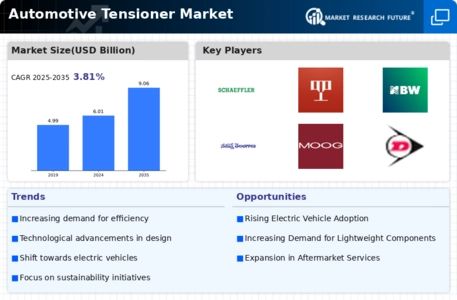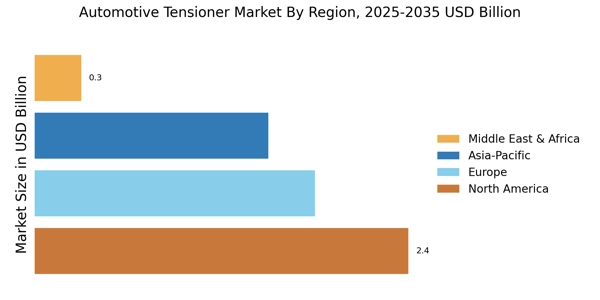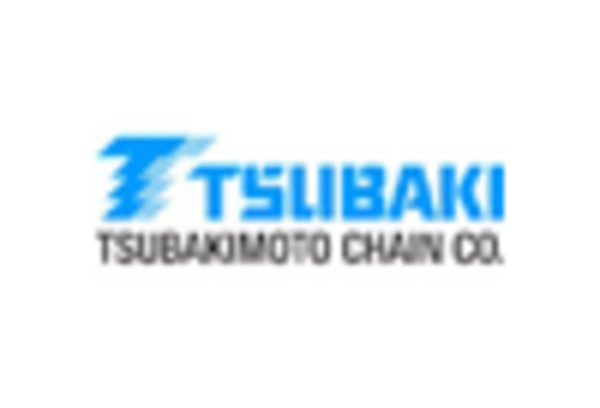Growth of the Automotive Aftermarket
The Automotive Tensioner Market is poised for growth due to the expanding automotive aftermarket. As vehicles age, the need for replacement parts, including tensioners, becomes more pronounced. The aftermarket segment is projected to grow at a compound annual growth rate of approximately 5% over the next few years. This growth is driven by an increasing number of vehicles on the road and a rising awareness among consumers regarding the importance of maintaining vehicle performance. Consequently, the Automotive Tensioner Market stands to benefit from this trend, as aftermarket suppliers seek to provide high-quality tensioner solutions to meet the demands of vehicle owners.
Increasing Demand for Fuel Efficiency
The Automotive Tensioner Market is experiencing a notable surge in demand for fuel-efficient vehicles. As consumers become more environmentally conscious, manufacturers are compelled to enhance the fuel efficiency of their offerings. Tensioners play a crucial role in optimizing engine performance, thereby contributing to reduced fuel consumption. According to recent data, vehicles equipped with advanced tensioner systems can achieve up to 10% better fuel efficiency compared to traditional systems. This trend is likely to drive innovation within the Automotive Tensioner Market, as companies strive to develop more efficient and effective tensioning solutions that meet the evolving needs of consumers.
Regulatory Compliance and Emission Standards
The Automotive Tensioner Market is significantly influenced by stringent regulatory compliance and emission standards imposed by various governments. These regulations necessitate the adoption of advanced technologies that minimize emissions and enhance engine performance. Tensioners are integral to achieving these objectives, as they ensure optimal belt tension, which in turn affects engine efficiency and emissions. The increasing pressure on manufacturers to comply with these standards is likely to propel the demand for innovative tensioner solutions. As a result, the Automotive Tensioner Market may witness a shift towards more sophisticated designs that align with regulatory requirements, thereby fostering growth in this sector.
Technological Advancements in Tensioner Design
The Automotive Tensioner Market is witnessing a wave of technological advancements that are reshaping tensioner design and functionality. Innovations such as the integration of smart technologies and materials are enhancing the performance and reliability of tensioners. For instance, the development of electronic tensioners allows for real-time adjustments based on engine conditions, improving overall efficiency. This trend is likely to attract investment and research in the Automotive Tensioner Market, as manufacturers aim to stay competitive by offering cutting-edge solutions that cater to the needs of modern vehicles. The continuous evolution of technology in this sector may lead to more efficient and durable tensioner systems.
Rising Production of Electric and Hybrid Vehicles
The Automotive Tensioner Market is being shaped by the rising production of electric and hybrid vehicles. As automakers pivot towards electrification, the demand for specialized tensioners that cater to these new powertrains is increasing. Electric and hybrid vehicles often require different tensioning solutions compared to traditional internal combustion engines, creating opportunities for innovation within the Automotive Tensioner Market. The anticipated growth in electric vehicle production is expected to drive the development of tensioners that can accommodate unique design requirements, thereby expanding the market and fostering competition among manufacturers.


















Leave a Comment